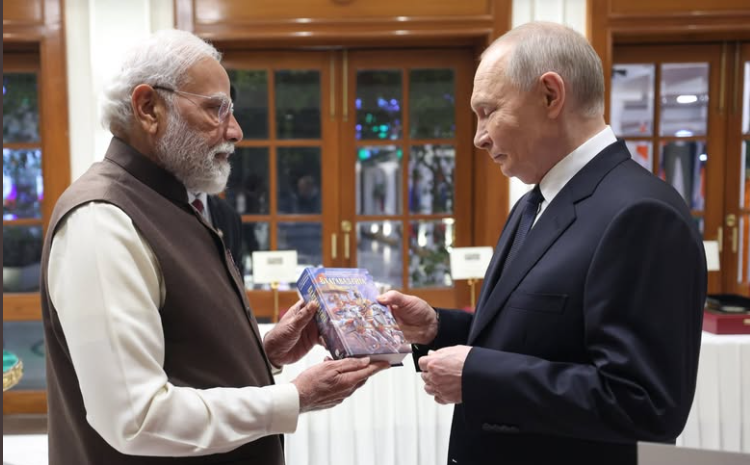India’s Space Program Soars with PSLV-C60 Launch
- InduQin
- Dec 30, 2024
- 4 min read
Updated: Jan 3
India's space program achieved a significant milestone with the successful launch of the PSLV-C60 rocket, which deployed two SPADEX satellites into orbit. This mission showcases ISRO's growing expertise in advanced space technologies and highlights the crucial role of private companies like Ananth Technologies Pvt. Ltd. (ATL) in supporting these efforts. The SPADEX satellites will demonstrate autonomous docking capabilities, vital for future missions. Additionally, collaborations with startups and research institutions through initiatives like POEM-4 further enhance India's innovative space ecosystem and position it as a global leader in exploration.

India's space ambitions reached new heights with the successful deployment of the PSLV-C60 vehicle, which launched the innovative Space Docking Experiment (SPADEX) satellites into orbit. This remarkable achievement not only showcases ISRO’s expanding capabilities in advanced space technologies but also emphasizes the vital contributions of private industries in advancing India’s space exploration goals.
On December 31, 2024, ISRO’s PSLV-C60 rocket took off, carrying two identical SPADEX satellites—SDX01 (Chaser) and SDX02 (Target)—into low Earth orbit. Each satellite, weighing 220 kg, is engineered to demonstrate essential technologies such as autonomous rendezvous and docking, crucial for future crewed missions, satellite servicing, and interplanetary exploration.
The successful placement of the SPADEX satellites into a 475 km circular orbit marks a significant milestone for ISRO, placing India at the forefront of mastering space docking technologies. “This mission is a crucial step towards enhancing India’s capabilities for deep space missions, satellite servicing, and the future establishment of the Bharatiya Antariksh Station (BAS),” remarked ISRO Chairman S. Somanath. “With this, we join the ranks of the U.S., Russia, and China in mastering orbital docking—a technology central to the future of space exploration.”
The SPADEX mission aims to go beyond mere satellite deployment. The two satellites are set to rendezvous and dock in space, showcasing the ability to perform in-orbit operations such as spacecraft refueling, maintenance, and modular assembly—capabilities that are vital for upcoming Moon and Mars missions, as well as for ISRO's human spaceflight initiatives.
While ISRO's expertise and mission design were pivotal to the PSLV-C60's success, private sector companies like Ananth Technologies Pvt. Ltd. (ATL) played a crucial role. ATL, a leader in aerospace innovation, was instrumental in providing key components for both the SPADEX satellites and the PSLV-C60 launch vehicle. The company contributed essential subsystems, including Rendezvous Processing Units (RPU) and DC-DC converters for the satellites, along with 29 critical subsystems for the PSLV-C60.
Dr. Subba Rao Pavuluri, Chairman and Managing Director of ATL, expressed pride in being part of this landmark mission: “Being a part of this milestone mission highlights ATL’s evolving contributions to India’s space program. From subsystem manufacturing to the assembly and testing of full satellites and launch vehicles, ATL is committed to supporting ISRO’s space ambitions.” This mission also marked ATL’s 10th successful PSLV launch integration, reinforcing its status as a trusted partner in India's burgeoning space sector.
Headquartered in Hyderabad, ATL has contributed to over 100 satellites and 80 launch vehicles for ISRO, benefitting from state-of-the-art facilities in Thiruvananthapuram for fabrication, assembly, and testing. ATL’s involvement in PSLV-C60 is a testament to the growing importance of private industries in India’s space exploration narrative.
The PSLV-C60 mission also highlighted a groundbreaking collaboration between ISRO, private startups, and academic institutions. In a significant initiative to enhance India’s space innovation ecosystem, IN-SPACe (Indian National Space Promotion and Authorization Center) enabled the deployment of 10 payloads from non-government entities aboard the PSLV Orbital Experimental Module (POEM-4). This initiative opens doors for startups, research institutions, and universities to conduct in-orbit experiments, thereby lowering barriers for smaller players in the space sector.
Dr. Pawan Goenka, Chairman of IN-SPACe, emphasized the importance of these partnerships: “The POEM-4 mission provides a unique platform for Indian startups and academic institutions to test their technologies in space. This reduces the cost of space experimentation and opens up a wider range of opportunities for the private sector to contribute to India’s space future.”
Startups like Bellatrix Aerospace, GalaxEye Space Solutions, and Manastu Space Technologies had their payloads deployed during this mission, encompassing a diverse array of experiments—ranging from testing green propulsion systems to investigating the effects of microgravity on biological systems. This diversity reflects the innovative spirit of India’s private sector, which is now empowered to refine their technologies in the realm of space.
The PSLV-C60 mission marks a pivotal advancement in ISRO’s quest to master space docking—an essential technology for upcoming missions, including human spaceflight and deep-space exploration. The successful launch of the SPADEX satellites sets the stage for more sophisticated docking systems and in-orbit operations, such as satellite refueling and the assembly of interplanetary spacecraft.
As ISRO gears up for its ambitious future projects, including the Chandrayaan-4 mission to return samples from the Moon and the construction of BAS by 2035, mastering space docking technologies will be vital. “Docking technology is not just important for servicing satellites, but also for building and maintaining space stations, which are central to our long-term space exploration objectives,” stated N. Surendran, Project Director of SPADEX.
With both public and private sectors collaborating effectively, India’s prospects in space exploration have never been brighter. The PSLV-C60 mission, showcasing the successful deployment of the SPADEX satellites and the integration of industry and academic partnerships, lays a robust foundation for the future of space missions.
The PSLV-C60 mission represents a monumental achievement not only in ISRO’s pursuit of space docking capabilities but also in the evolution of India’s space ecosystem, where the private sector plays an integral role in expanding the nation's space capabilities. Through strategic collaborations, pioneering initiatives like POEM-4, and the ongoing advancement of technologies such as space docking, India is solidifying its position as a global leader in space exploration.







Comments